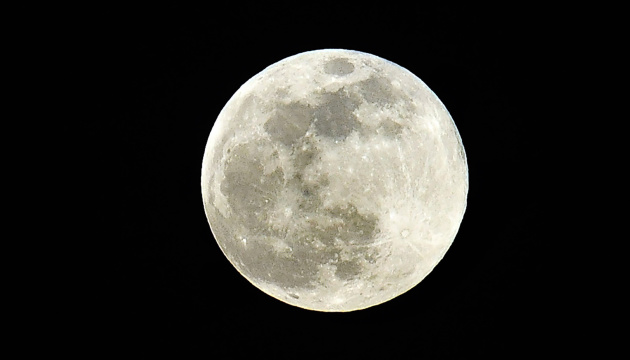Studying the Moon, Chinese scientists concluded that the period of volcanic activity on Earth’s satellite ended about 2 billion years ago, that is, it lasted almost twice as long as previously thought.
As reported by Ukrinform, citing research results published by a group of scientists from the Institute of Geology and Geophysics of the Chinese Academy of Sciences, People’s Diary.
During the study, Chinese experts analyzed samples of lunar soil delivered to Earth at the end of 2020 by China’s Chang’e-5 lunar exploration mission (Chang’e-5). It was then possible to obtain approximately 1,731 grams of lunar samples for the first time in over 40 years.
The study says scientists have managed to date the age of the youngest rock on the moon to around 2 billion years. This suggests that the period of lunar volcanism was 800-900 million years longer than previously thought.
Chinese scientists said the age of basalt formation, its geochemical properties and the cooling time frame are crucial to understanding the scale of the magma eruption on the Moon.
To determine the age of the resulting Chang’e-5 basalt, the research team needed to determine the thickness of the basalt lava flow and the scale of the eruption.
For this purpose, the experts analyzed 21 olivine grains from basalt fragments and found that most olivine particles had a cooling time of less than a year. Using a thermodynamic model, they estimated the thickness of the basalt lava flow to be between 10 and 30 meters.
Given that the Chang’e-5 landing site is flat, the research team calculated the volume of basalt eruptions based on the surface relief and concluded that large-scale magma eruptions occurred on the Moon about 2 billion years ago. This is consistent with previous results obtained with remote sensing methods.
According to the study, although the overall intensity of volcanic activity on the Moon decreases over time, episodic eruptions can occur in the late stage with fairly strong above-average lava flows.
The scientists also noted that the causes of large-scale volcanic eruptions in the late lunar period remain undetermined and will continue to work with other teams to create a model of the Earth’s thermal evolution.
As he reported Chinese aerospace company Ukrinform has signed agreements with European and French space agencies on joint exploration of the moon as part of the next Chang’e-6 lunar exploration mission, scheduled to launch next year.













